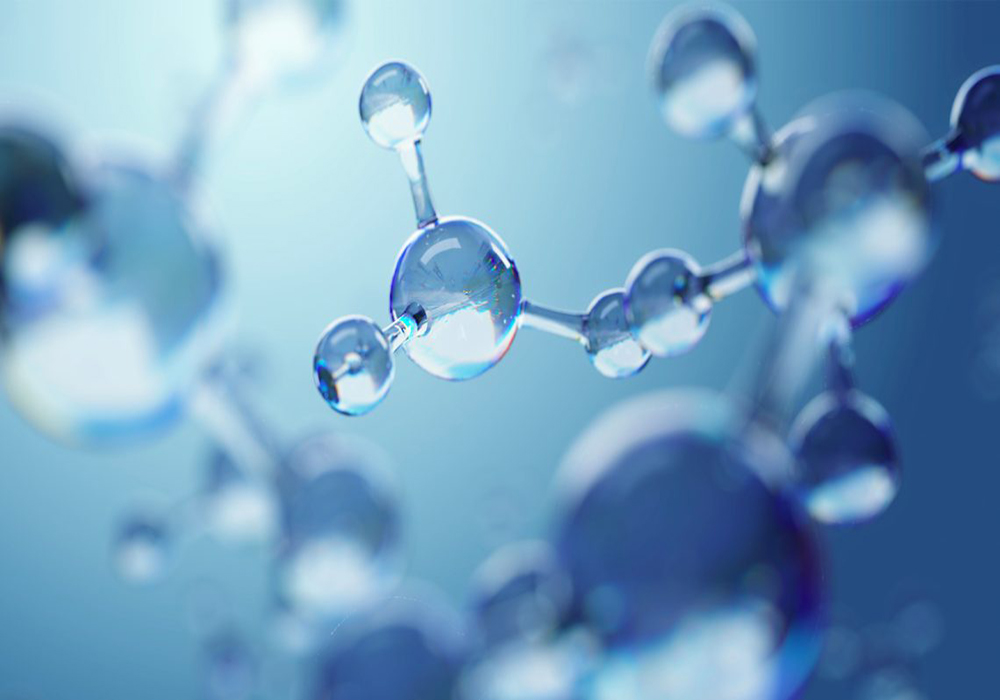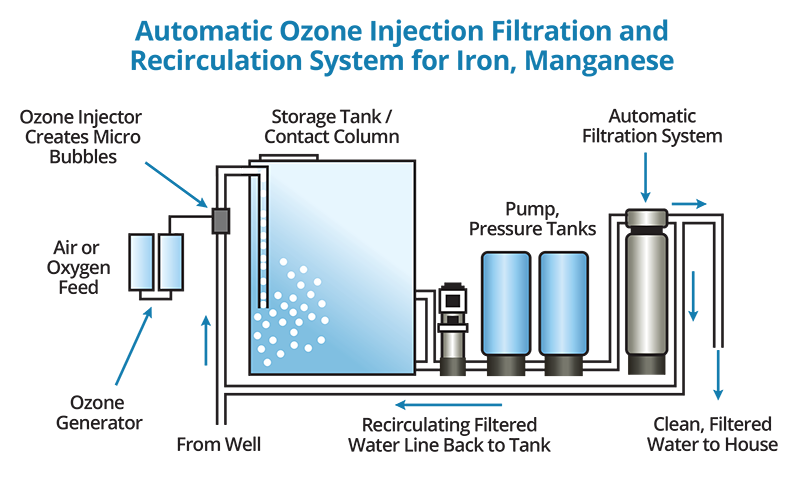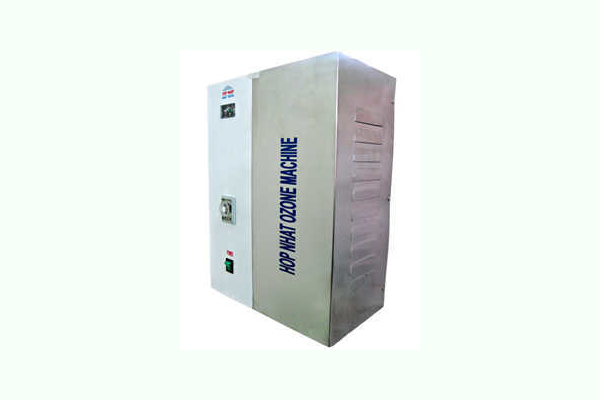Ozone is a natural gas found in the earth’s atmosphere. It is one of nature’s most powerful oxidants. In the upper atmosphere, ozone filters the sun’s ultraviolet rays and protects the earth from harmful radiation. But on the surface, Ozone plays a role in ensuring clean drinking water through Ozone water treatment. Ozone water treatment is very versatile, and can be used for both commercial and home purposes. This article will provide information on how an Ozone water treatment system works and whether it is right for your family.

What is Ozone Water Treatment?
Ozone water treatment is a method of reducing contaminants through the oxidation stability of ozone. Ozone is an oxidant, which means it reacts with other substances and gains their electrons. For example, when iron oxidizes, it becomes rust. Ozone water treatment starts with Ozone generation in the generator. Ozone is then injected into the water and immediately begins to oxidize removing contaminants, such as bacteria, viruses as well as metals.
Ozone oxidizes organic matter in the membranes of bacteria, viruses and parasites. This weakens and kills their cells, removing contaminants. Ozone also oxidizes iron, manganese, and copper to solid particles that can be easily filtered from the water by mechanical filtration or some activated carbon filter. Through oxidation, Ozone water treatment systems can even remove cloudy and odorous water caused by chlorine.
How does Ozone water treatment work?
Ozone water treatment works by dissolving Ozone in the water and through the subsequent oxidation of bacteria, other pathogens in the water. To better understand this process, it is best to first understand how Ozone is created. Ozone is produced from oxygen. An oxygen molecule contains two oxygen atoms (O2), while an Ozone molecule contains three oxygen atoms (O3). When electric current or ultraviolet rays pass through the air, their energy splits the oxygen molecules into two oxygen atoms. The loose oxygen atoms then recombine with regular oxygen molecules to form ozone. In the upper atmosphere, sunlight interacts with oxygen to create the protective ozone layer of the earth. When closer to the surface, Ozone is created when lightning strikes and electric current cuts through the oxygen-rich air. Both of these processes are simulated in an ultraviolet and electrical ozone generator, which helps treat water. Ozone can also be generated by electrolytic and chemical reactions, but ultraviolet and electrical ozone generators are the most common for water treatment.

Electric Ozone Generator
Electric Ozone Generators generate Ozone through a halo discharge, which mirrors how Ozone is produced during a thunderstorm. Instead of lightning, a high-voltage electrical discharge is delivered through oxygen inside a glass, ceramic or steel chamber. This facilitates the breakdown of Molecular Oxygen to Atomic Oxygen and allows the formation of Ozone. Ozone is then foamed into the water or vacuumed through a venturi tube and oxidation begins immediately.
Ultraviolet Ozone Generator
Ultraviolet rays in the range of 160-240 nanometers (nm) can generate Ozone from oxygen. Similar to the corona discharge process, UV light breaks down oxygen molecules and splits them into two oxygen atoms. The free atoms then combine with the entire oxygen molecule to form Ozone. In the UV Ozone Generator, Ozone is generated when oxygen passes between the lamp and the quartz tube of the UV lamp. Then Ozone is sucked into the water by a steam generator and the water treatment process begins. However, UV Ozone Generators are not as powerful as Electric Ozone Generators and produce Ozone at a lower concentration.
What does an Ozone water treatment system remove from water?
1. Effective
Ozone is a strong oxidant, instantly neutralizing bacteria, viruses and parasites, and has stronger disinfecting properties than chlorine. Ozone’s oxidation stability also helps remove stubborn metals from water. Ozone is effective over a wide pH range, so even if the water is acidic, the effectiveness of Ozone water treatment will not be hindered..
2. No chemicals
Ozone water treatment does not add chemicals to the water. No pollutants are created during Ozone water treatment and any wastewater generated is safe to enter water lines and sewers.
3. Tried and True Technologyg
Ozone water treatment has been tested and used to treat municipal water since the early 1900s. A water treatment plant in Nice, France started using ozone water treatment technology in 1906. and today it is used in more than 2,000 installations worldwide.
4. Speed
Ozone water treatment is extremely fast. Most water treatment systems require extended contact times to remove or reduce contaminants, but Ozone works in just a few seconds.
Disadvantages of Ozone water treatment system
1. Cost
Ozone water treatment is expensive compared to other water treatment methods, such as chlorination. They have high equipment and operating costs; It is difficult to find a qualified expert in Ozone water treatment. Ozone home water treatment systems cost from a few hundred to several thousand dollars. Although, for cities, treating water with Ozone can save money overtime, as it offsets the cost of chemicals required for chlorination.
2. Difficult to transport
Ozone has a short half-life when dissolved in water. Therefore, it is very difficult to store and transport; must be created on-site for immediate use.
3. Corrosion and potential toxicity
Ozone is a toxic gas, so if an ozone generator leaks, it can create a hazard in your home. Common side effects of ozone exposure include headache, eye and throat irritation. Also, because Ozone is a strong oxidizing agent, it can corrode pipes and fixtures if they are not made of Ozone resistant materials, such as stainless steel or Teflon.
What is ozone water treatment used for?
Ozone is used in commercial, industrial and municipal water treatment systems, as well as in household systems. Major beverage companies rely on ozone water treatment technology and it is often used to disinfect bottled water. Ozone is also used to treat and disinfect municipal water supplies. In addition, water treatment with Ozone is an effective method to disinfect ice machines. For example, the Oxidized Ozone Sanitization System cleans the air, water, and interior surfaces of the ice machine, producing clean, odor-free ice.
Ozone water treatment vs chlorination
Chlorination has been the traditional chemical process for water purification for decades, but ozone water treatment is becoming increasingly popular. Ozone and chlorine are often compared because they both have strong disinfecting properties, but they differ in speed, chemical presence, and overall effectiveness. Ozone water treatment systems disinfect water approximately three times faster than chlorination and require a shorter contact time with water to be effective. In an Ozone water treatment system, disinfection occurs at the point of contact between ozone and water. While chlorine will remain in the water and continue the disinfection process for a while. This is why you may occasionally smell chlorine in your tap water. The remaining amount is not harmful to consume, but has an unpleasant chemical smell. When using an Ozone water treatment system, no ozone remains in the water when drinking.
Currently, chlorination is less expensive than water treatment with ozone, but with advances in ozone water treatment technology, many cities are considering switching to it. Plus, with Ozone, there are no concerns about chemical byproducts, such as chloroforms and halo methanes, as with chlorine. Finally, some parasites, such as cryptosporidium and giardia are resistant to chlorine but can be eliminated quickly in an ozone water treatment system.
Is Ozonated Water Safe to Drink?

Ozonated water is suitable for drinking. Oxidation is a natural process that eliminates the need for chemicals. Ozone water treatment systems produce no chemical by-products and yield only purified water. However, you should wait at least thirty minutes after drinking, so any leftover ozone has time to convert back to oxygen.
Do you need an ozone water treatment system?
If you are using well water and are concerned about minerals such as iron and manganese, or the presence of bacteria, viruses, and parasites that can affect your health, an Ozone water treatment system will solve the problem. these concerns.
Ozone machine HN8 is specialized for water treatment, odor treatment, decolorization, and food processing with medium and small capacity. Machine-generated ozone by cold discharge and wave field runs high density ions under low voltage, frequency 3-5 Kv. Ozone components are improved and upgraded on the principle of supersonic vibration discharge. All components are made in Vietnam. The machine has applied the technology of Ozone receiver tube material with pyrex glass tube to withstand high temperature, harsh working environment with good service life and durability. The high-voltage unit is vacuum-molded with the most special glue available today to prevent electrical discharge when working. All components used are dry, solid, very high quality and are protected in specialized epoxy blocks to avoid oxidation and corrosion from the outside environment when working. More specifically, the machine has a built-in Nitrogen gas separator with the most advanced Alumina beads today. Filter material adsorbed by high quality Alumina particles is clean, durable, and energy-saving. The oil-free air pump installed in the machine is reduced from vibration and positioned by a high-quality spring suspension system to ensure smooth operation. Control the machine with only one switch with 2 states On / Off, easy to manipulate and operate. Running off timer (stepless adjustment from 5 minutes to 6 hours).
Learn more: Selective reverse osmosis or water distillation?
Follow Fanpage: https://www.facebook.com/SongPhungthietbinganhnuoc/ to update new products.
Translator: Duong Nguyen Hoang Khang


